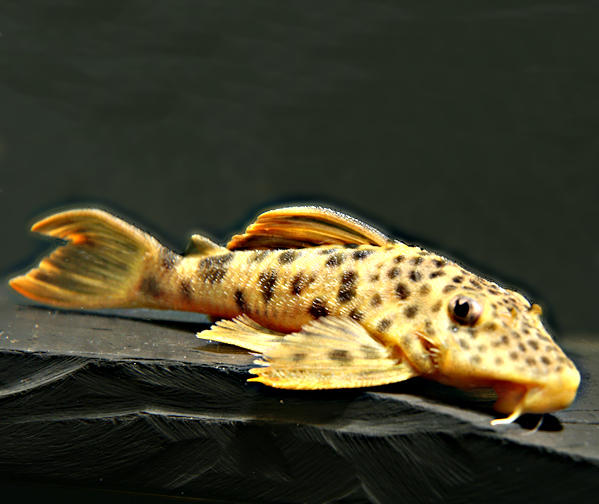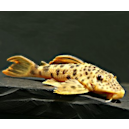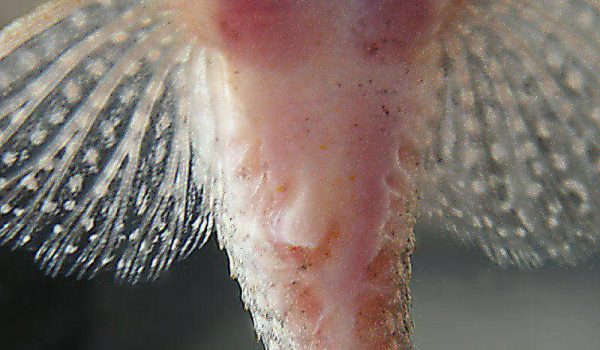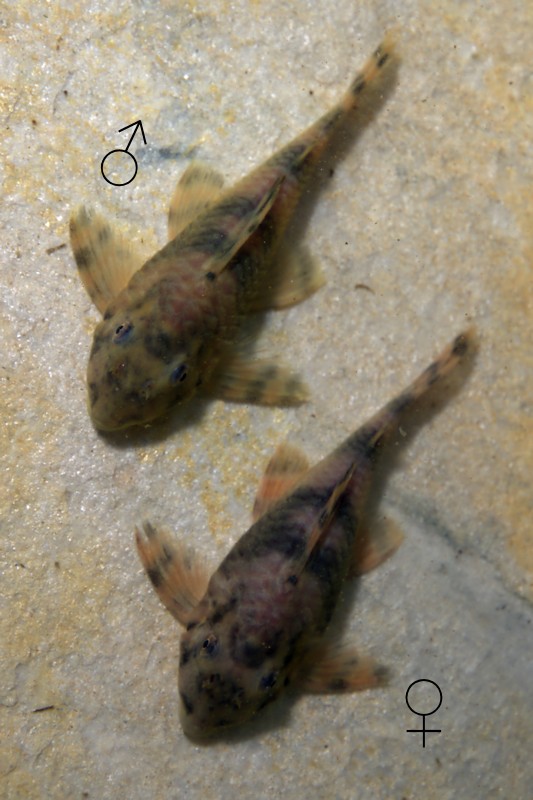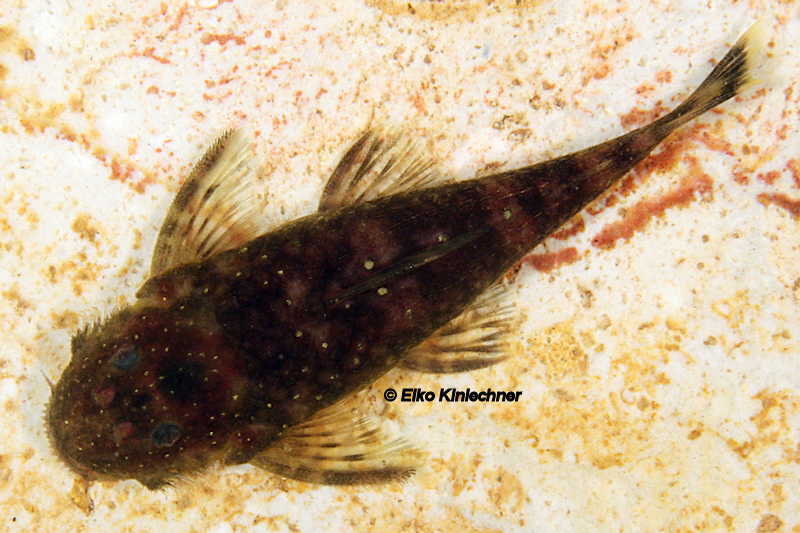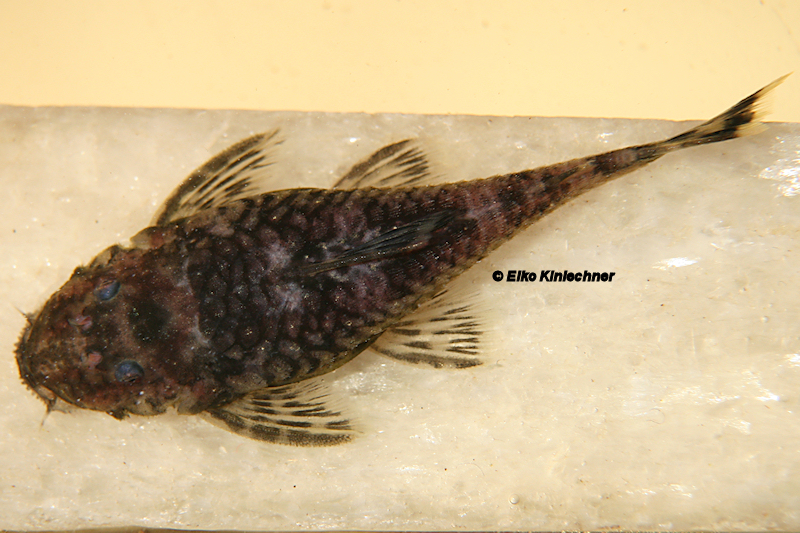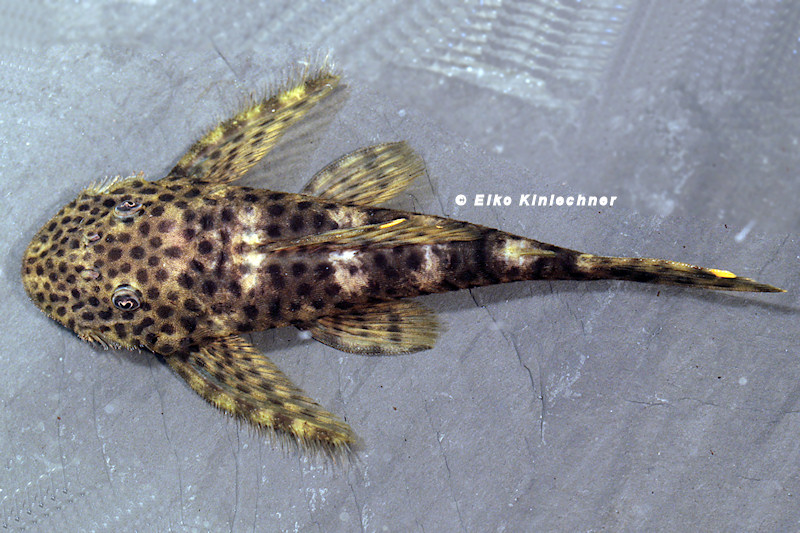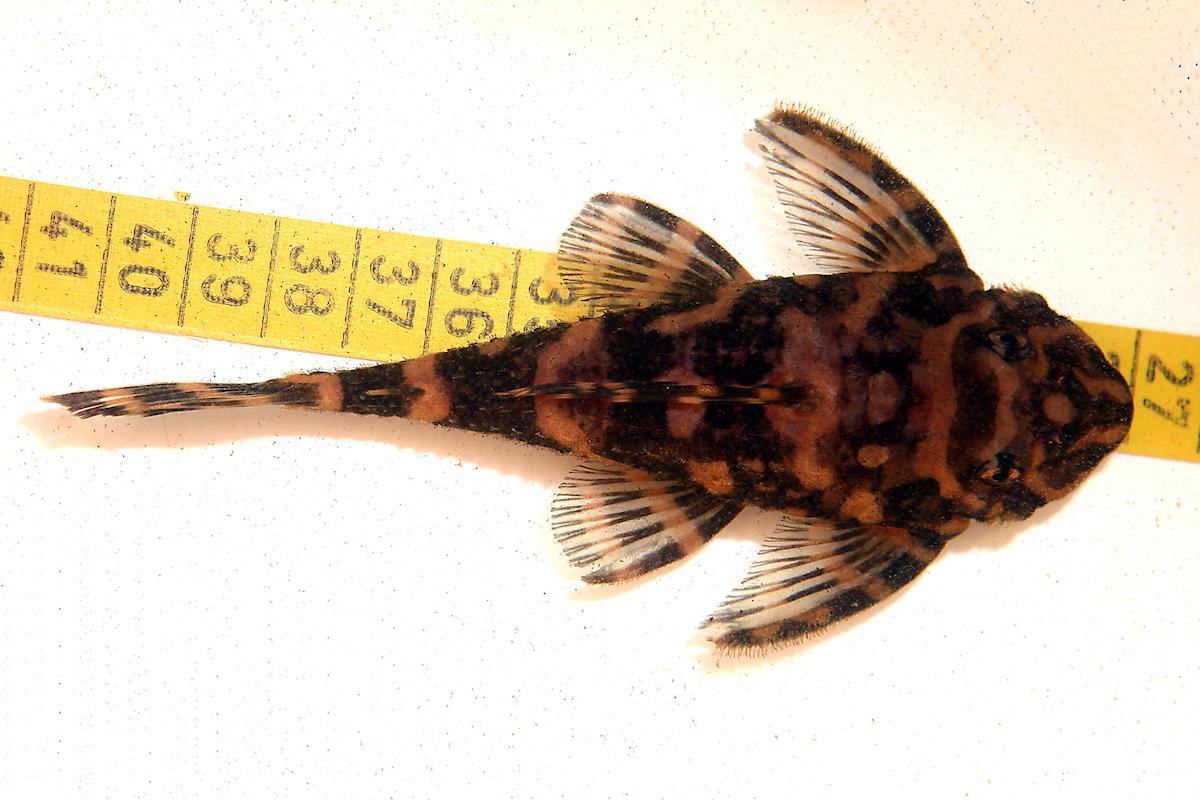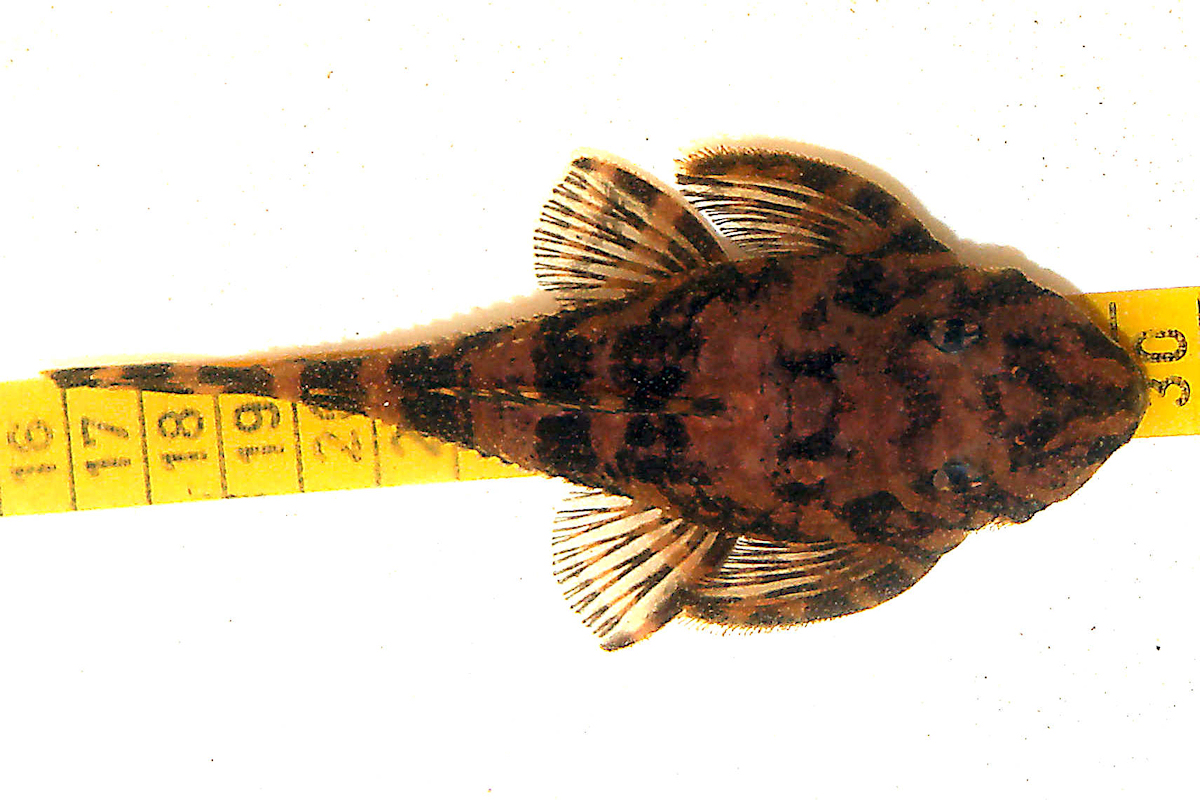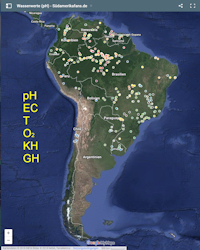Often many holders of Loricariids wait in vain for a successful reproduction.
Sometimes it just does not happen. But so many have been waiting in vain because in his group there were only same-sex plecos. How can you distinguish males and females in permanent small plecos such like Hypancistrus, Peckoltia, Panaqolus, Dekeyseria, Lithoxus, Pseudolithoxus, Zonancistrus? Unfortunately, the sex-characteristics of young plecos are often not or only partially formed.
Body shape
Very useful is a view from the air to the plecos:
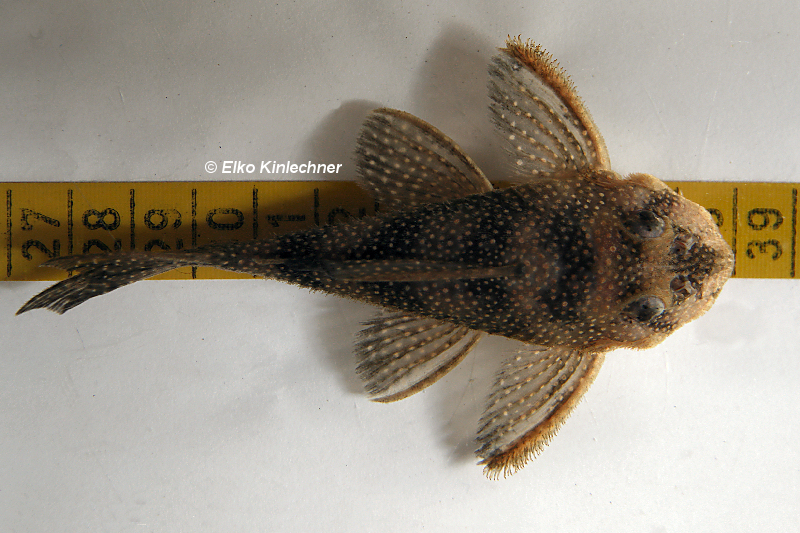
Hypancistrus sp. “L136”, male
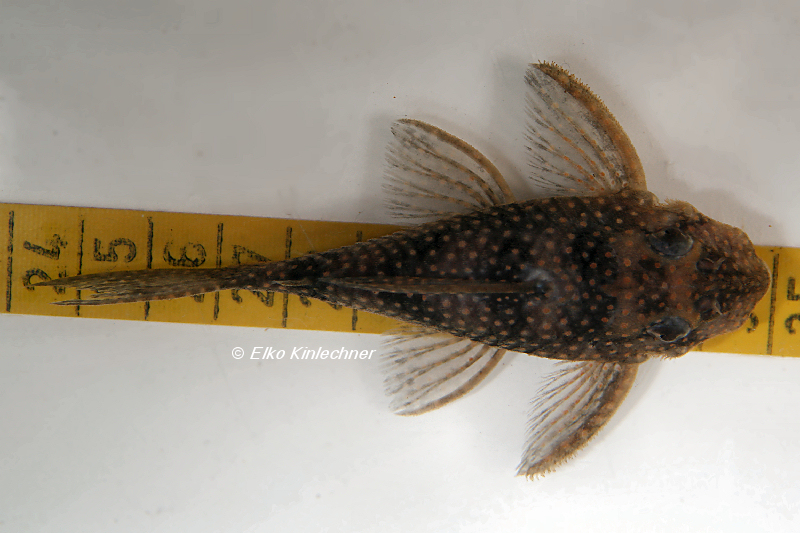
Hypancistrus sp. “L136”, female
You can see in these pictures the different body shapes:
The male has a broad head and a slender waist. In contrast, the head of the female is narrow and the waist is noticeably wider. This observation applies to many other permanent small hypostominae plecos. Examples:
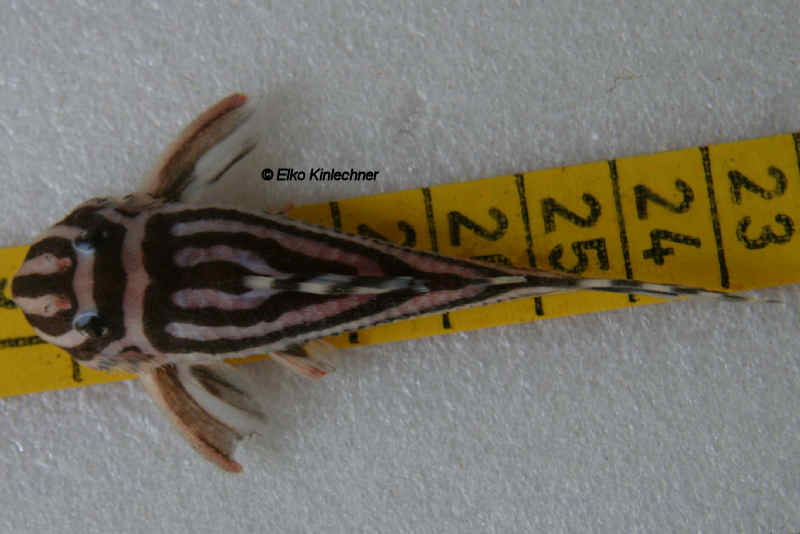
Hypancistrus zebra (L46), male
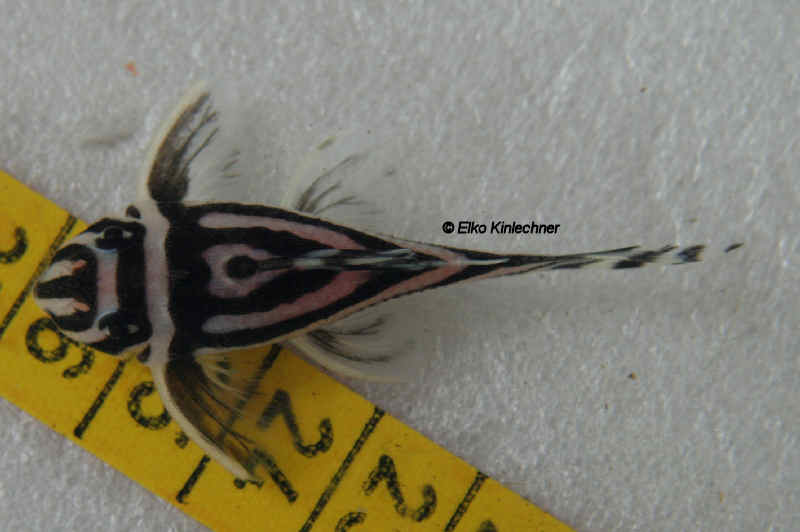
Hypancistrus zebra (L46), female
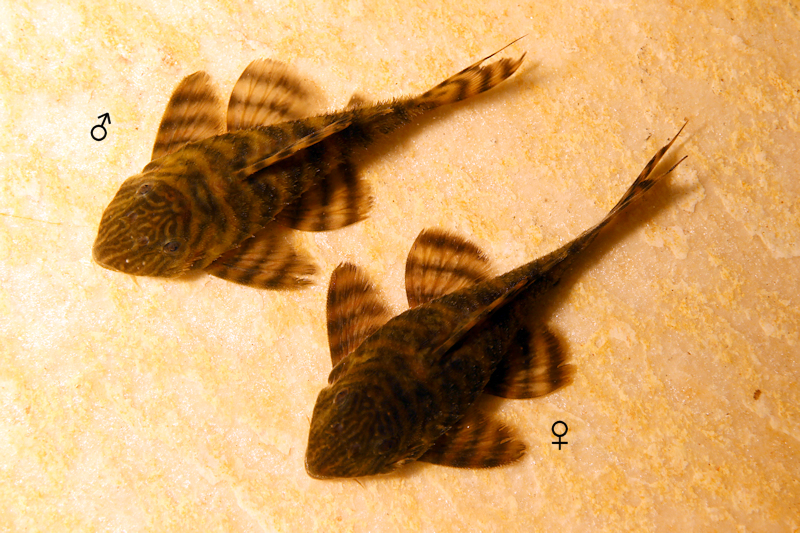
Panaqolus sp. “L 403”, male / female
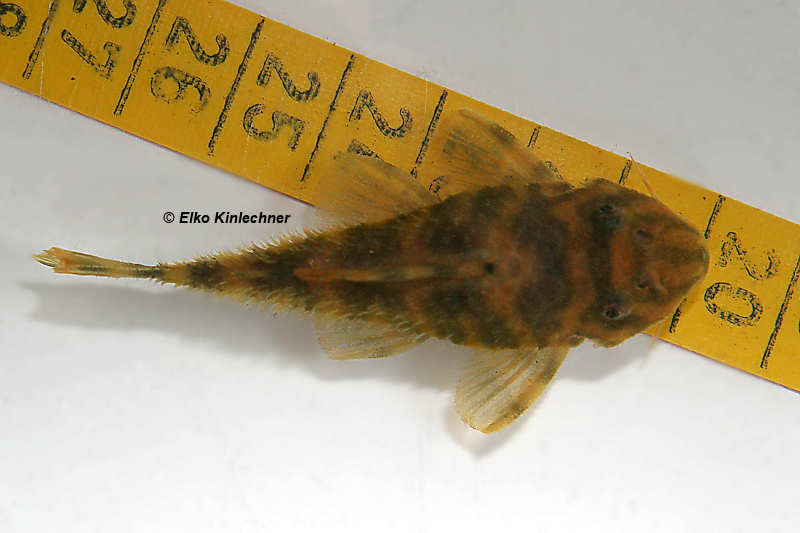
Peckoltia sp. “L 38”, male
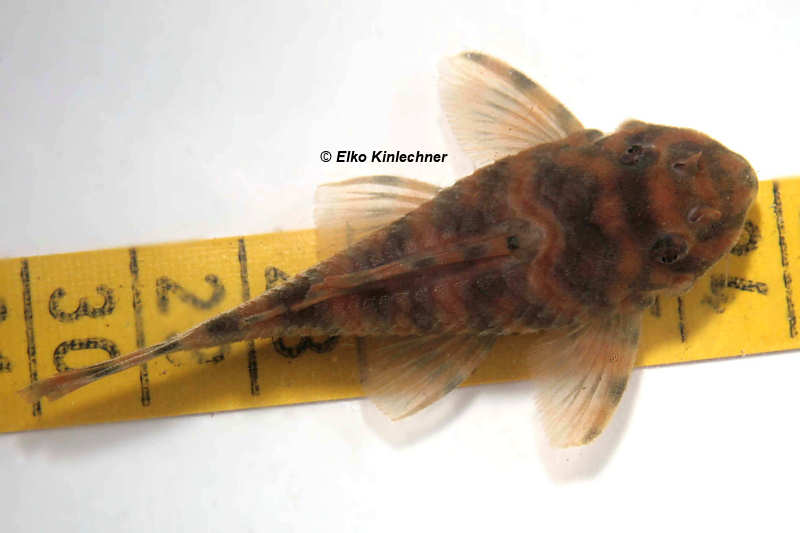
Peckoltia sp. “L 38”, female
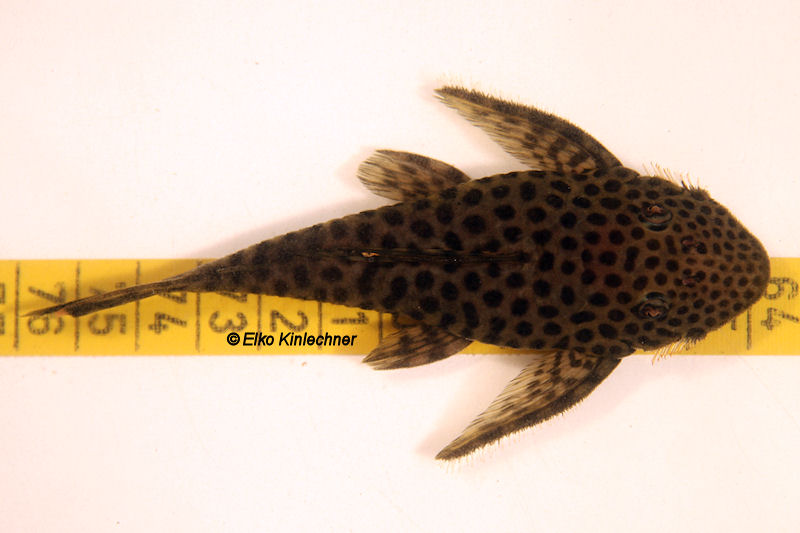
Pseudolithoxus dumus (L 244), female
However, in males, which have already been held a long time in the aquarium, it always comes before time that this may have somewhat thicker due to generous feed gifts.
Other characteristics to differentiate the sexes are:
The genital papilla
Sometimes the genital papilla of a pleco is clearly visible. The genital papilla of males is more pointed. In contrast, the genital papila of females is tubular:
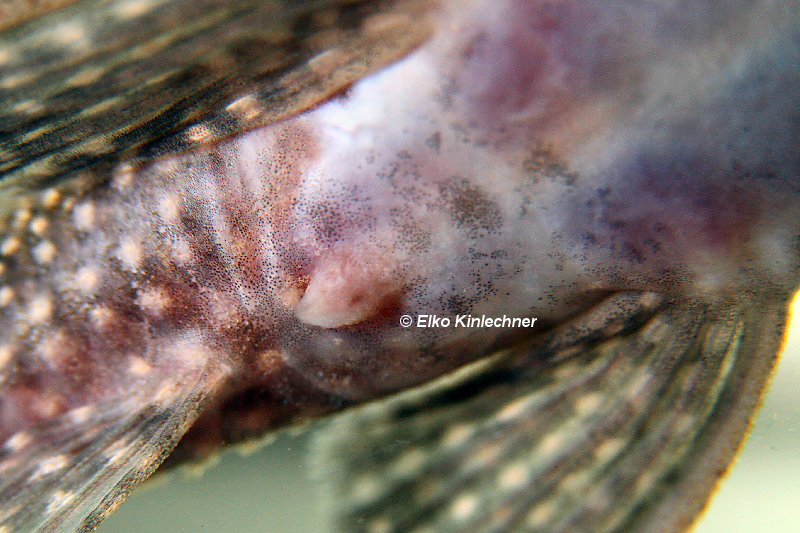
Hypancistrus sp. “L136”, genital papilla, male
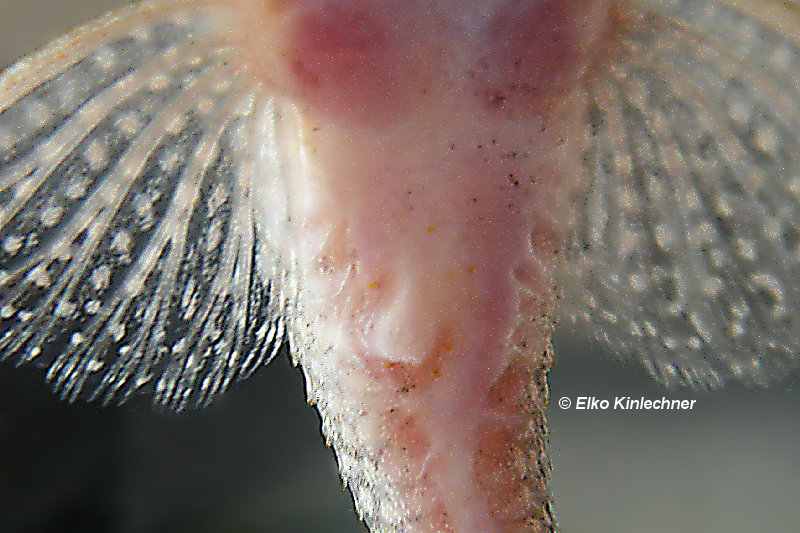
Hypancistrus sp. “L136”, genital papilla, female
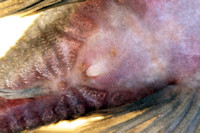
“Baryancistrus” beggini (L239), genital papilla, male
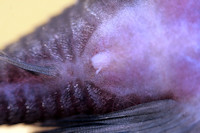
“Baryancistrus” beggini (L239), genital papilla, female
Unfortunately, the genital papillae are not always readily visible.
Odontodes behind the opercular
In plecos of the same age, generally males have longer and stronger odontodes behind the opercular.

Hypancistrus sp. “L136”, Odontodes behind the opercular, male
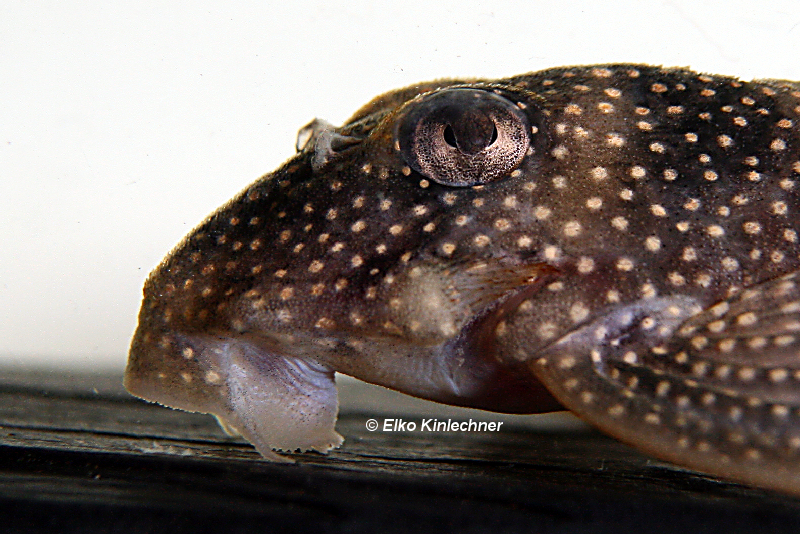
Hypancistrus sp. “L136”, Odontodes behind the opercular, female
It can happen that when “disputes” between the plecos the odontodes are highly stressed and then break. Until these are grown, it may take a few weeks.
Pectoral fin spine
In plecos of the same age, generally males have strong pectoral fin spines. On the pectorals spins of males there are longer and stronger odontodes.
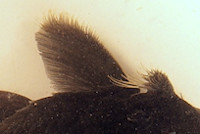
“Baryancistrus” beggini (L239), pectoral fin, male
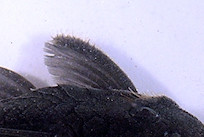
“Baryancistrus” beggini (L239), pectoral fin, female
Odontodes on body and caudal peduncle
On the body and caudal peduncle of males (compared with age-matched females), often there are more and longer ondontodes. In some species these odontodes are only temporarily.
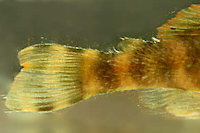
Peckoltia sp. “38”, odontodes on caudal peduncle, male
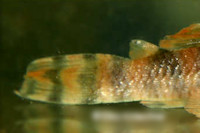
Peckoltia sp. “38”, odontodes on caudal peduncle,female
Tentacle
Only bristlenose (Ancistrus) have tentacles. Generally males have more and longer tentacles as females. Often females have only short stubs around the mouth.
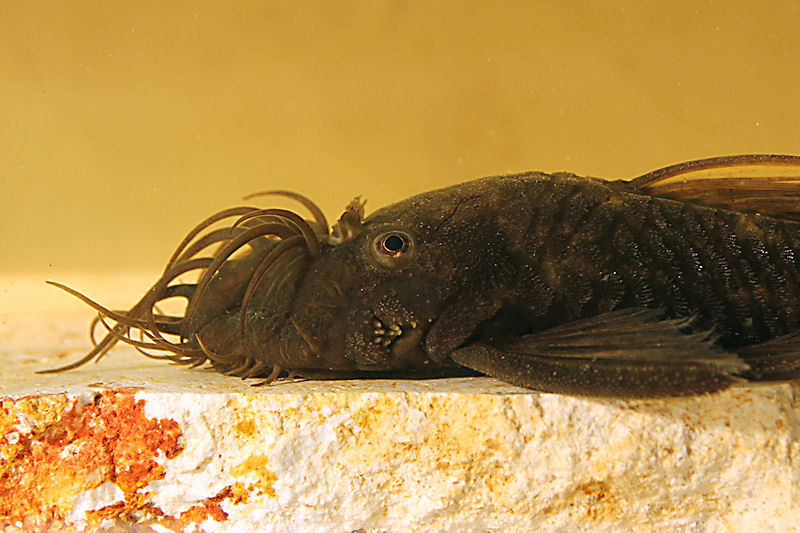
Ancistrus sp. “L 338”, tentacle, male
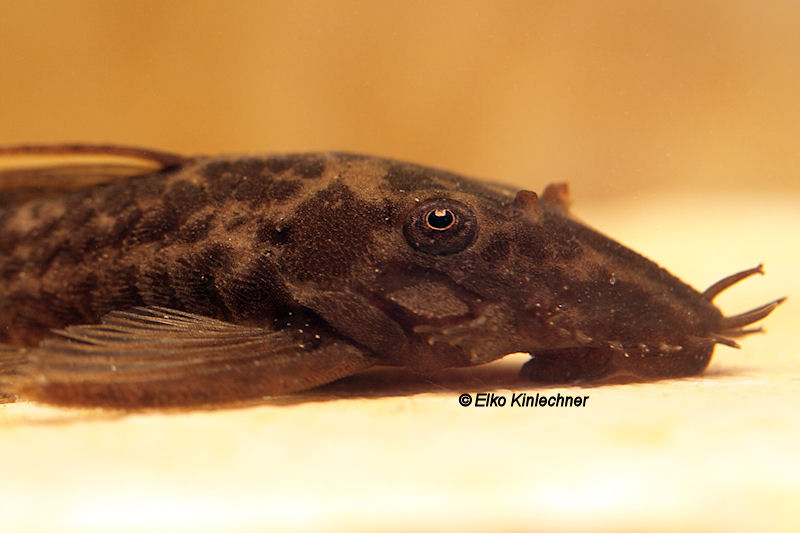
Ancistrus sp. “L 338”, tentacle, female
Renewals of ventral fins
In some species, for example Dekeyseria and Zonancistrus, the ventral of the males are extended.
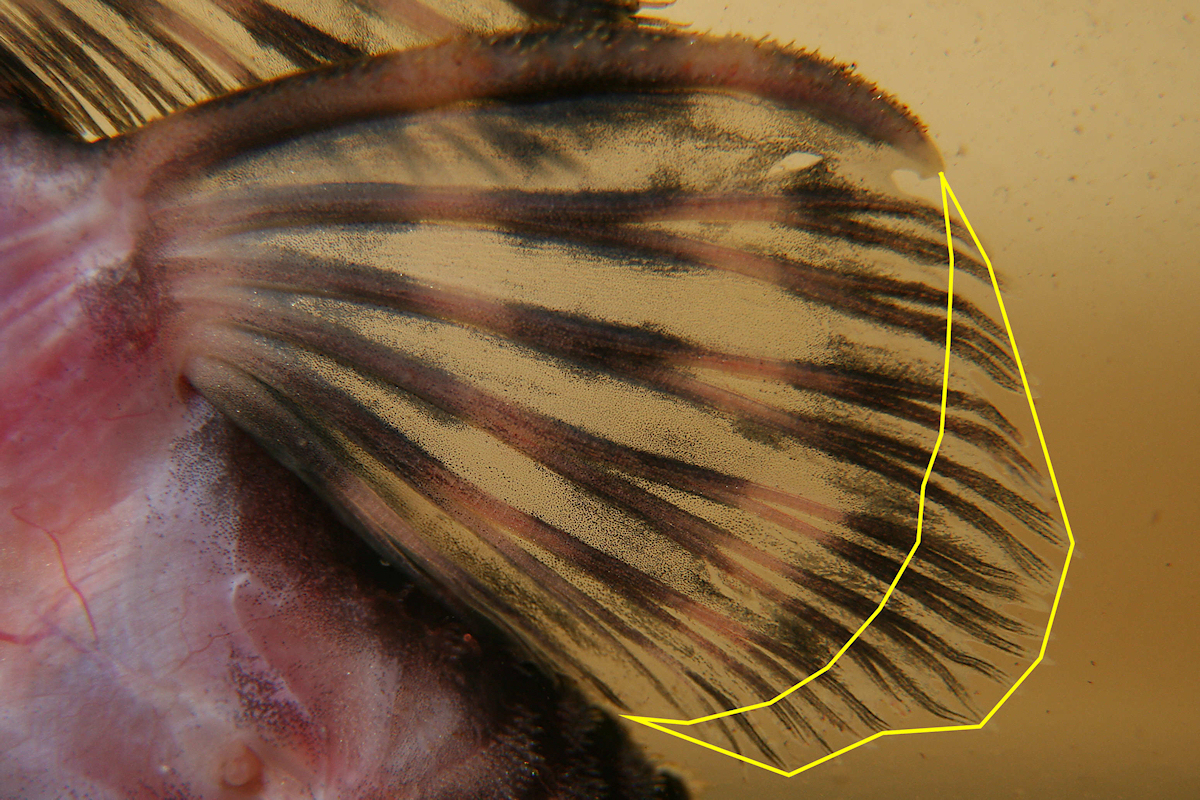
Zonancistrus brachyurus (L 168), ventral fin, male
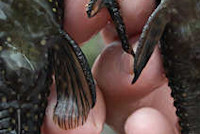
Dekeyseria scaphirhyncha (L 216), ventral fins, male / female
Conclusion
There are several characteristics where you can determine the genders of permanent small hypostominae plecos. Especially in young animals the characteristics are not yet or only partially formed. We check possible several of the above characteristics and forming an overall opinion.
A reliable determination is often, but not always possible.
